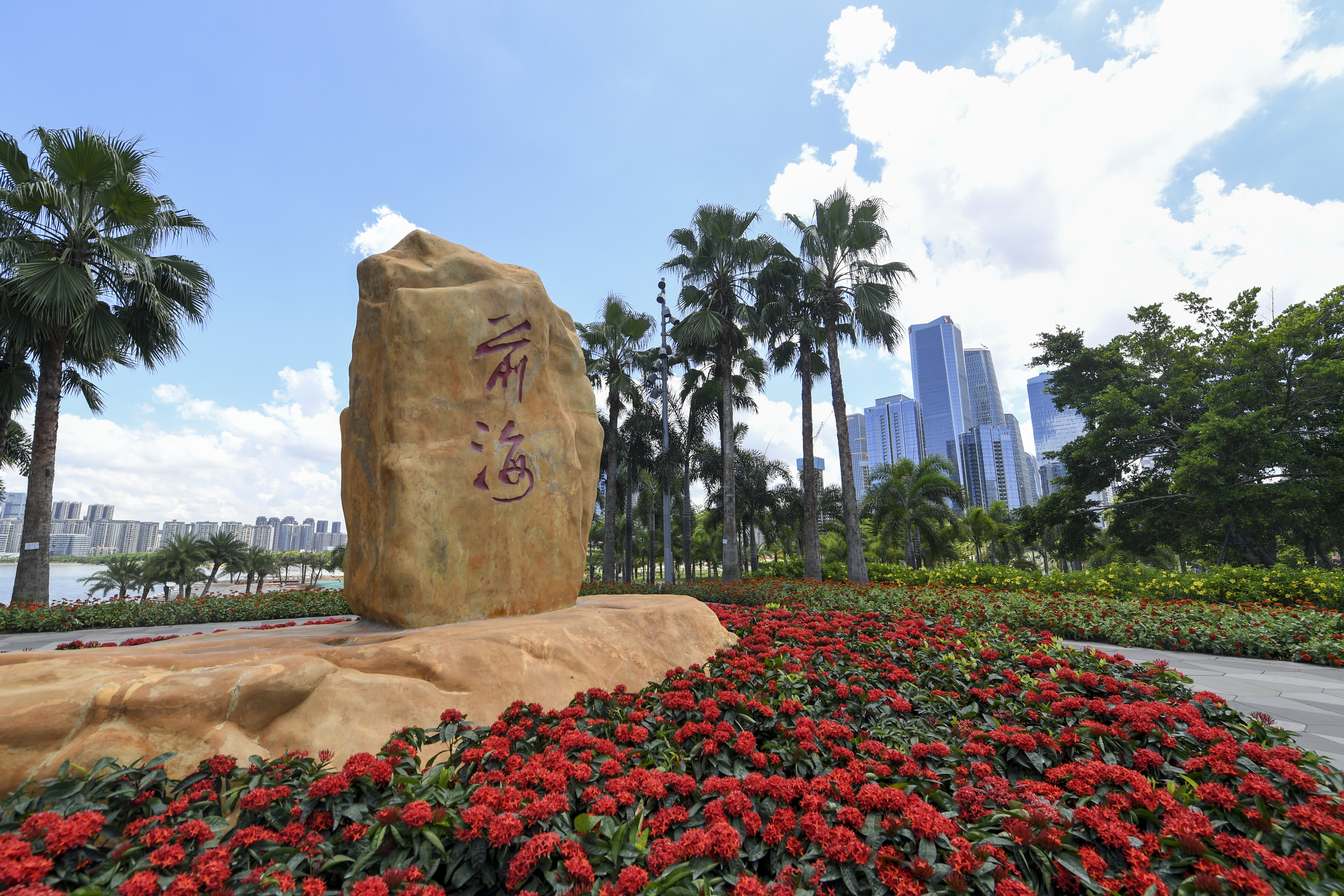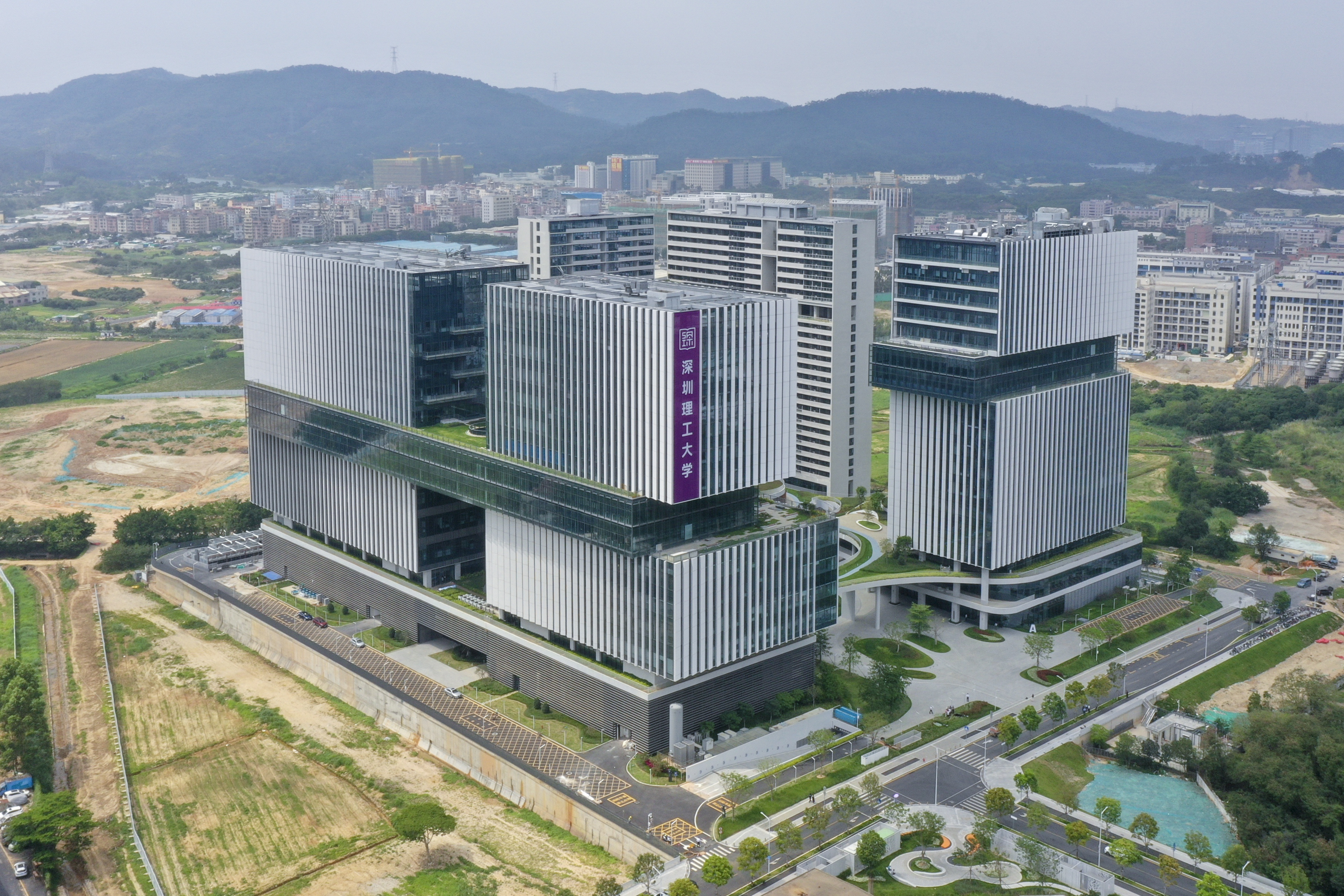Strategic innovation platforms give full play to the potential of talents
From: Shenzhen Municipal Talent Affairs Bureau
Four major national strategic platforms have been built, namely, the Guangming Science City, the Hetao Shenzhen-Hong Kong Science and Technology Innovation Cooperation Zone, the Qianhai Shenzhen-Hong Kong Modern Service Industry Cooperation Zone, and the Xili Lake International Science and Education City, which have become new growth engines for science and technology innovation.

Qianhai Shenzhen-Hong Kong Modern Service Industry Cooperation Zone
Covering a total area of 120.56 square kilometers, the zone is located in the west of Nanshan Peninsula and east of Lingdingyang and the Pearl River Estuary. It comprises the western part of Nantou Peninsula and the CBD of Bao’an District, and serves as an important node in the axis of the development of the “Pearl River Delta Bay Area.”
On Aug. 26, 2010, the State Council approved the Overall Development Plan of the Qianhai Shenzhen-Hong Kong Modern Service Industry Cooperation Zone, which stated that Qianhai will be built into a demonstration zone serving innovation and cooperation in the Guangdong-Hong Kong modern service industry. On Sept. 6, 2021, the CPC Central Committee and the State Council issued the Plan for Comprehensively Deepening the Reform and Opening Up of Qianhai Shenzhen-Hong Kong Modern Service Industry Cooperation Zone, expanding the size of the zone.
Data showed that as of November 2022, the actual use of foreign investment in Qianhai reached US$5.163 billion, accounting for 54.1% of the city’s total; The area’s actual use of Hong Kong capital amounted to US$4.907 billion, up 3.3% year on year. The total import and export volume of Qianhai Comprehensive Bonded Zone amounted to 205.3 billion yuan, a year-on-year increase of 49.6%, whose ranking rose three spots from 9th to6thamong 148 counterparts in the country. Qianhai achieved 70 new innovations, bringing the total number to 755. Seven innovations were promoted nationwide and replicated, bringing the total number to 72. Qianhai took first place in a ranking of the National Free Trade Zone Institutional Innovation Index released by the Sun Yat-sen University released, and Qianhai ranked first.

Guangming Science City
Guangming Science City starts from the Shenzhen-Dongguan border in the north of the city and is bounded by Longda Expressway and Dongchang Road in the west, with a planned area of 99 square kilometers. Construction work will be carried out on about 31 square kilometers of land, while the available land for other purposes is roughly 68 square kilometers. It will be built into the core function area of the Guangdong-Hong Kong-Macao Greater Bay Area International Science and Technology Innovation Center and will form an important part of the Comprehensive National Science Center.
By September 2022, Guangming Science City had housed 23 major scientific and technological innovation carriers, including nine large scientific installations, 10 cutting-edge cross-research platforms, two provincial-level laboratories, and two research universities.
According to the Spatial Planning Outline of Guangming Science City, it will be built in three phases.
By 2025, a world-class science city will have taken shape, where major science and technology infrastructure clusters will be formed, the construction of world-class universities and research institutions will be accelerated, and a number of internationally competitive innovative enterprises will have emerged. By 2035, it will become a core area serving the highly international Comprehensive National Science Center, with a world-leading science and technology infrastructure cluster and a number of emerging industrial clusters that will lead future development. By 2050, it will have been transformed into a science center with global influence that is able to produce a large amount of forward-looking basic research and pioneering achievements, serving as an important engine for China to build itself into a world power in the realm of science.

Hetao Shenzhen-Hong Kong Science and Technology Innovation Cooperation Zone
The Hetao Shenzhen-Hong Kong Science and Technology Innovation Cooperation Zone straddles the boundary between Shenzhen’s Futian District and Hong Kong. The 3.89-square-kilometer zone comprises a 0.87-square-kilometer park in Hong Kong on the south side of Shenzhen River and a 3.02-square-kilometer park in Shenzhen on the north side of the river. The latter was planned, designed, developed, and operated by Shenzhen-Hong Kong Kecheng Co., a subsidiary of the State-owned Shenzhen Investment Control Co. Ltd. In October 2021, the Hong Kong SAR Government proposed in its Development Strategy for the Northern Metropolis a plan to transform the HK-Shenzhen Innovation Science Park and the San Tin/Lok Ma Chau Development Node into the 240-hectare San Tin Technopole, or Hong Kong’s Silicon Valley, which will be an important engine for the construction of the GBA International Science and Technology Innovation Center.
By July 2022, 10 specialized science and innovation parks and 600,000 square meters of research space had been put into use. The Shenzhen-Hong Kong Collaborative Innovation Center, Shenzhen-Hong Kong International Science Park, International Quantum Research Institute, the first and second phases of the International Biological Pharmaceutical Industry Park, and the Hetao National Innovation Center were completed, gathering high-end scientific research resources from Hong Kong and foreign countries. The Shenzhen-Hong Kong International Science and Technology Park alone accommodates the scientific research institutions set up by four prestigious Hong Kong universities, namely the City University of Hong Kong, Chinese University of Hong Kong, Hong Kong University of Science and Technology, and the University of Hong Kong.
In this zone, efforts are being made to implement more than 150 high-end science and innovation projects to ensure they make substantial progress, with an average of 50 high-end projects per square kilometer. More than 300 people from 24 Hong Kong and Macao entrepreneurial teams have been stationed in incubator acceleration platforms, which have been granted 203 patents. Many technological breakthroughs have been made and research achievements commercialized.
Xili Lake International Science and Education City
With a planned area of nearly 70 square kilometers, Xili Lake International Science and Education City is one of the major strategic platforms for Shenzhen to contribute to the development of the Guangdong-Hong Kong-Macao Greater Bay Area. It is home to the Pengcheng Lab, a national strategic science and technology force, and seven universities, including Shenzhen University and the Southern University of Science and Technology. By July 2022, it had 519 innovation platforms at or above the municipal level and 1,096 national high-tech enterprises. The proportion of R&D investment as a share of GDP reached 6.65% while the number of patents per 10,000 people was 493.95, or 24 times the national average. It has gathered high-level innovation platforms such as the Shenzhen Institute of Advanced Technology, the Chinese Academy of Sciences, the National Supercomputer Shenzhen Center, Shenzhen Institute of Metrology and Quality Testing, and nine Nobel winners’ laboratories. It has also fostered a number of leading innovative enterprises such as ZTE, DJI, and Sangfor Technologies.
Construction of a proof-of-concept platform has begun, soliciting more than 120 early-stage achievement transformation projects from around the world. In terms of fintech, Xili Lake International Science and Education City has helped 7,835 firms obtain loans totaling 38.237 billion yuan from financial institutions, with the biggest single loan amounting to 5.3673 million yuan. Three phases of intellectual property securitization products have also been successfully launched, with 975 million yuan issued in total.